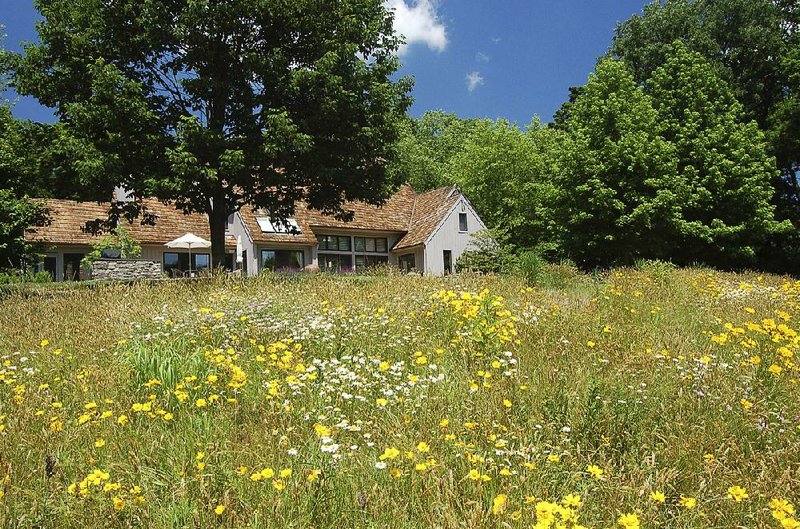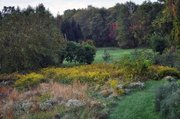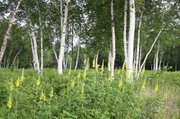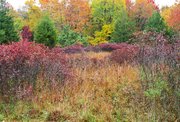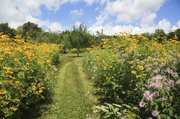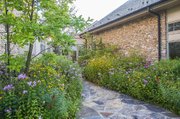The meadow garden has long captured the imagination of gardeners resisting the cultural hegemony of the lawn. The meadow stands as an appealing hybrid between the gaiety of the cottage garden and the primal power of the prairie. In an age of ecological gardening, its allure grows even stronger, and echoes of the meadow are found in plants now common in our gardens, whether their minders know it or not.
But when it comes to fashioning a full-throated version, here's the rub: It's difficult to achieve something that looks so easy. It requires knowledge and patience in a world that sometimes seems to value neither. Meet Larry Weaner, an environmental designer who has been crafting meadows and other naturally informed landscapes since the early 1980s.
A few years ago, there was the notion that meadows were so eager to sprout that you could buy a can full of wildflower seed, sprinkle the contents on a piece of cleared land and you would have a floriferous meadow in perpetuity. But there is no meadow genie in a can, and the idea was so ill-conceived from a horticultural (if not a marketing) standpoint that consumers were doomed to fail. Weaner explained to me over a cup of coffee that you don't plant a meadow; you set a series of natural events into motion and then guide their development.
The meadow-in-a-can idea "set back the meadow and maybe native design for 20 years, if not more," he said. "The product put forth was completely insufficient, and it wasted the inclination of so many people who failed."
DOOMED TO FAIL
The seed mixes were heavy on fast-blooming annuals and biennials such as corn poppies, cosmos, cornflowers and the like, "but these plants weren't aggressive enough to suppress weeds." The pretties petered out, and the uglies moved in.
How do you create a meadow? With a lot of advanced planning that includes a detailed understanding of your site's topography, soil type and biology, hydrology and a list of plant species that grow together naturally in your region. That's a lot to get your head around, so while you digest all that, you might pick up Weaner's book, Garden Revolution, written with Thomas Christopher. It is subtitled How Our Landscapes Can Be a Source of Environmental Change.
Weaner outlines one method of establishing a meadow: Kill existing vegetation and sow a
mix of perennial grasses and wildflowers using a seed drill that doesn't disturb the soil. The mix should be at least 40 percent warm-season grasses, which would give you an opportunity to plant such beauties as little bluestem, side-oats grama and purpletop tridens.
For the first two growing seasons, count on mowing at 6 inches every six weeks to eradicate tall weeds while allowing the young seedlings below to develop their roots. Once a year, walk through and spot-treat pernicious weeds such as thistle and the inevitable young woody invaders.
In the third year, you can form mown paths and settle to an annual winter mowing. Although you can shape the meadow by thinning dominant wildflowers such as goldenrod and asclepias or by allowing a few shrubs to frame a certain view, you can't "plant" a meadow as you might a garden border. As Weaner points out, pretty much every traditional horticultural practice is antithetical to his approach to making landscapes.
Don't pull weeds; you'll create more as you bring weed seeds to the surface. Instead, cut them. Don't fertilize, irrigate or enrich the soil; meadow plants like it lean, and you'll just encourage more weeds.
NATURAL CHANGES
He notes that the conventional wisdom among landscape designers (and moreover, I would add, their clients) is that a new garden is a creation that must not change, whereas an ecologically driven landscape is all about change, as species ebb and flow over the years.
In traditional landscape design, you might well find a small, hidden garden room that presents itself as a surprise. "If you walk it 100 times, there is no surprise," he said. "But if the landscape is changing constantly all the time, there is mystery."
Weaner and Christopher write that "a traditional garden is like a beautiful car with no engine. The body is sleek, the interior is plush, and the stereo sounds great, but the owner will always need to push it up the hills with bags of fertilizer, weeding forks and watering wands."
It's worth noting that there isn't just one model of a meadow. Its nature depends on the prevailing local conditions. And they write, too, about shrublands and woodlands -- different environments with shared principles of shepherding desirable plant communities while keeping weeds and invasives at bay.
If I had a 20-acre spread in the country, one of my first jobs would be to convert a lawn or an old hayfield into the type of seeded-grass-dominant meadow that Weaner espouses. Such a place would be especially rich in wildlife. (Note to voles, coyotes and groundhogs: Try the next county over.)
But what of the suburban or city garden? Weaner is unfazed by downscaling. "There was a 40-acre meadow I planted, and we made a path that created a little patch, probably four-by-four feet. It was a meadow. There is no minimum size."
MASTER OF NONE
Weaner lives on a one-third-acre plot in suburban Philadelphia and has nurtured desired seedlings as they have emerged, from drifts of cardinal flowers and golden ragwort. He discovered that if he laid wood chips, latent seeds of hickory and oak germinated and became handsome shade trees. After 28 years of guiding his flora, any soil that is disturbed is likely to result in eruptions of native plants rather than weeds, because the nature of the seed bank has changed under his guidance.
"I'm connected to it, but I'm not the sole master of it," he said. "Nature made some of the decisions."
He laments that it is difficult, if not impossible, for gardeners who want to move away from traditional garden models to find the labor and advice geared to ecological landscaping. But he feels the world has moved closer to his view of what constitutes a garden since he began 34 years ago.
"The extent to which people have changed their attitudes toward native plants and landscapes that contribute ecologically is an absolute sea change for the better," he said.
"That makes me very optimistic."
HomeStyle on 09/10/2016

